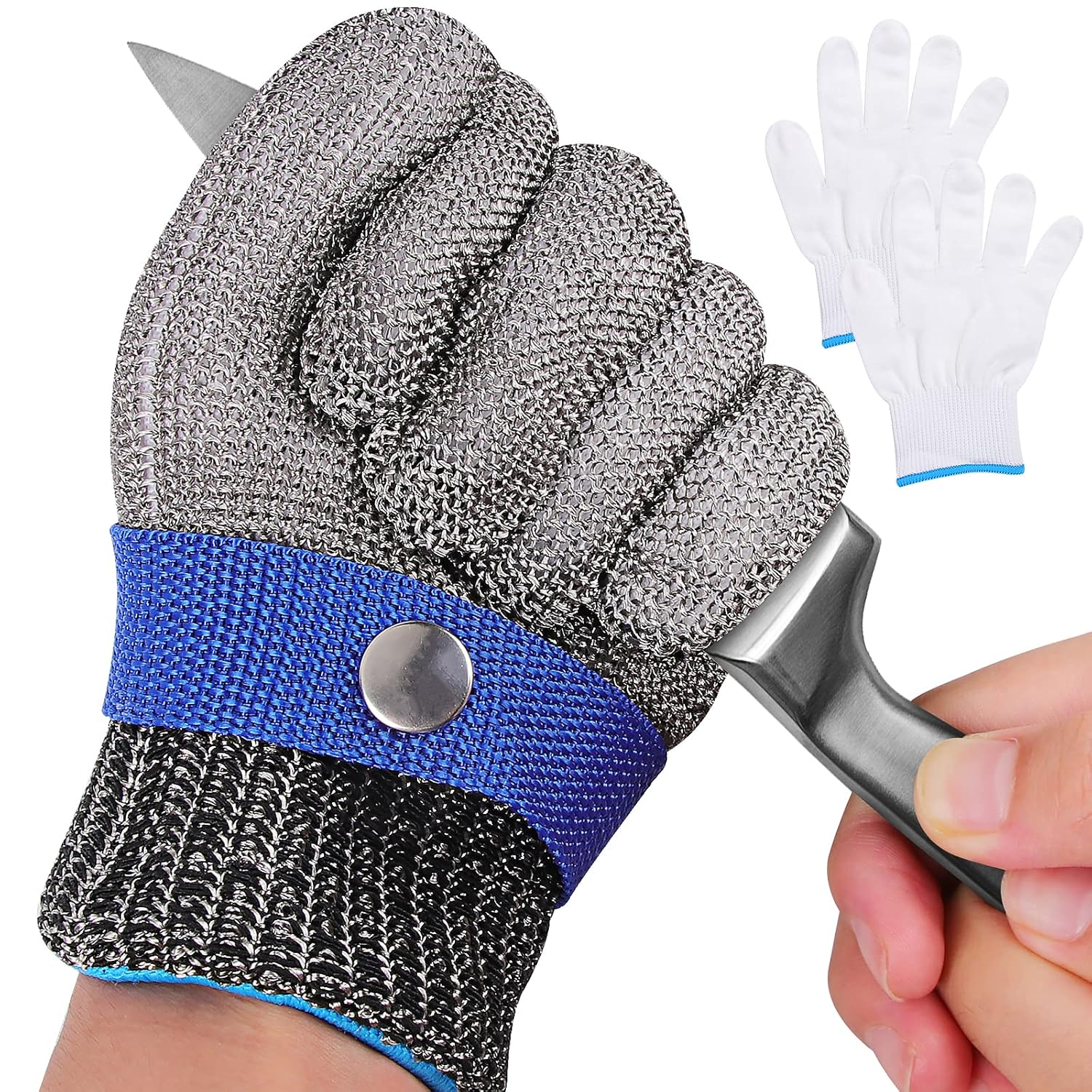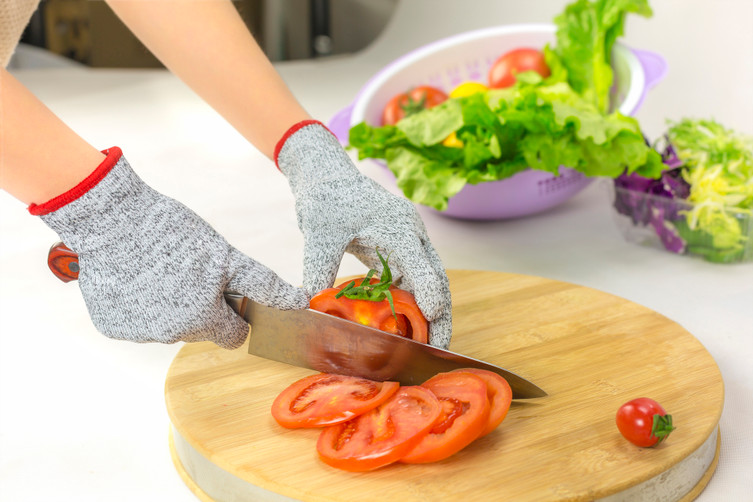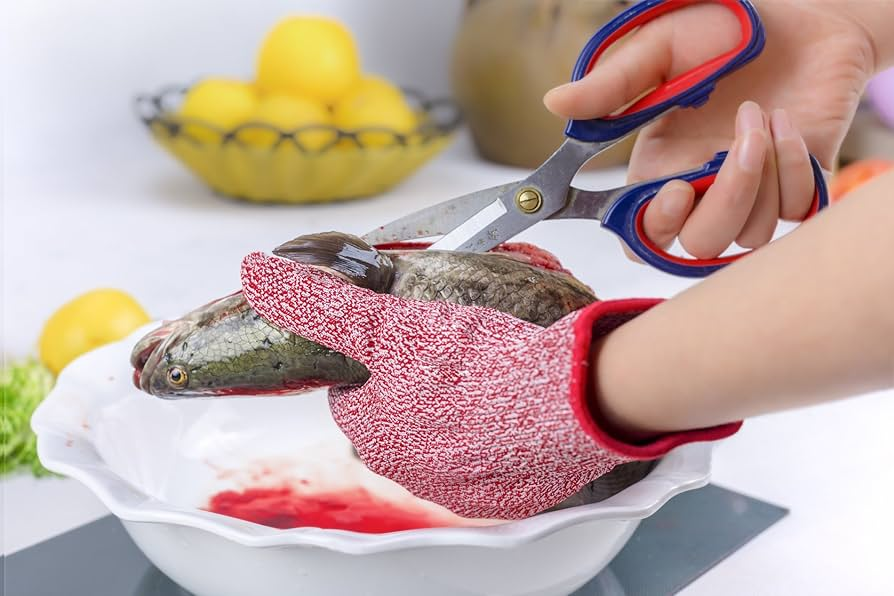What Are Cut-Resistant Gloves?
Cut-resistant gloves are a type of personal protective equipment (PPE) designed to protect users from injuries caused by sharp objects such as knives, metal, glass shards, and other cutting tools. To achieve this, they are typically made from special high-strength materials that effectively guard against cuts, abrasions, and punctures.
To put it simply, if regular fabric gloves are like paper, then cut-resistant gloves are like soft armor. They provide exceptional protection without hindering fine hand movements.
These gloves are commonly used in industries such as mechanical processing, metal cutting, glass handling, meat processing, food processing, construction sites, and even in household tasks (e.g., protection during food preparation).
Cut-resistant gloves not only protect against damage from knives, glass, plastic, ceramics, stone, ice, and steel rebar, but also help shield users from exposure to blood and other bodily fluids.
Types of Cut-Resistant Gloves
Cut-resistant gloves come in a wide variety, and they are typically categorized based on materials, construction, or cut-resistance levels. Among these, the most common distinctions are based on material and structure. Here is a detailed explanation:

Fiber-Knit Cut-Resistant Gloves
These gloves are made from materials like HPPE, aramid, fiberglass, and nylon. They are known for being lightweight, breathable, and soft—ideal for tasks requiring precision and dexterity.
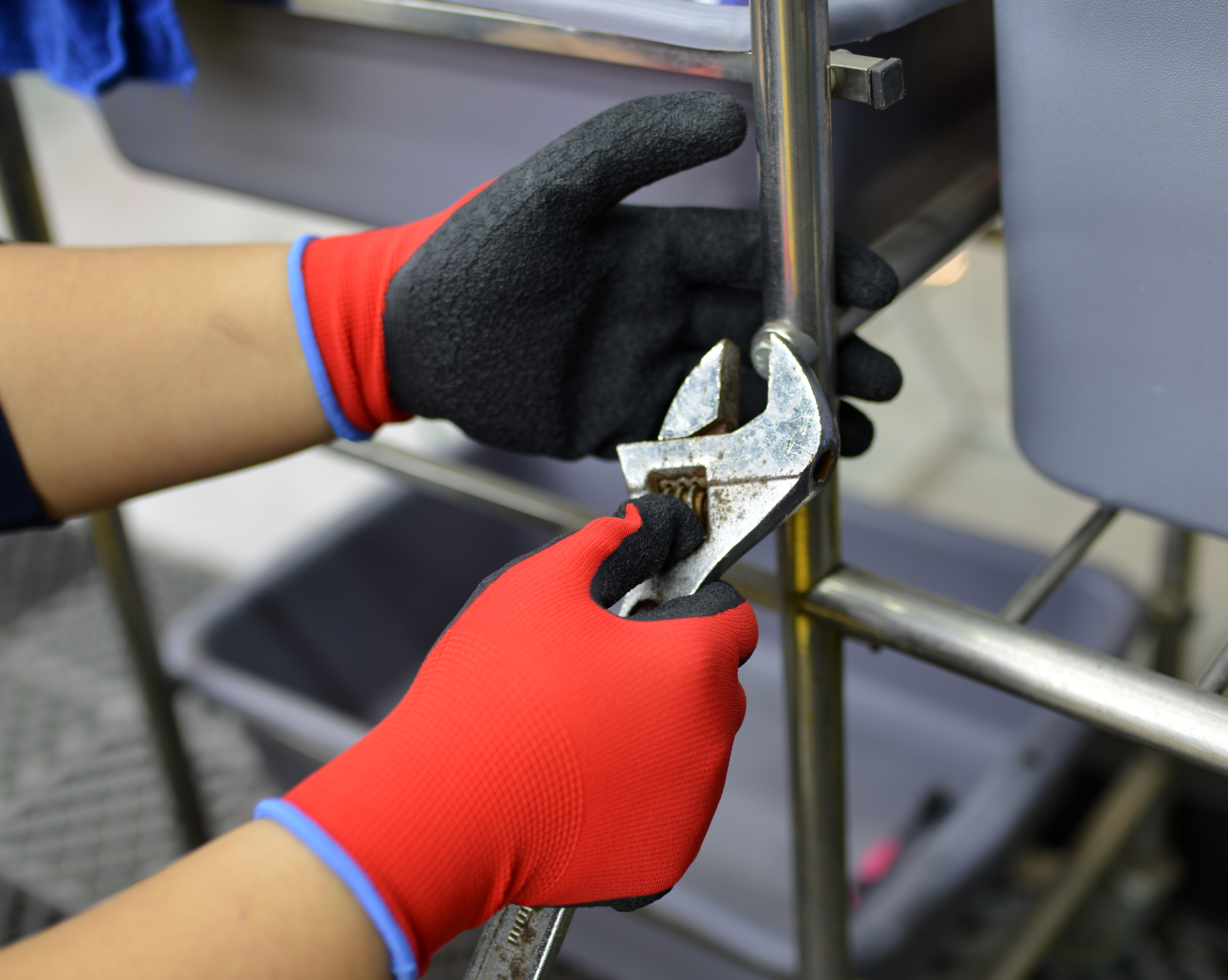
Coated Cut-Resistant Gloves
These are knit gloves made from cotton or polyester, coated with substances such as latex, nitrile, PU, or PVC. The level of cut resistance varies depending on the type of coating used.
Metal Chainmail Cut-Resistant Gloves
Typically made from stainless steel wire mesh, these gloves offer superior protection against cuts and punctures. However, due to their heavy construction, they are not ideal for lightweight or agile tasks. Instead, they shine in heavy-duty environments such as slaughterhouses and meat processing plants.
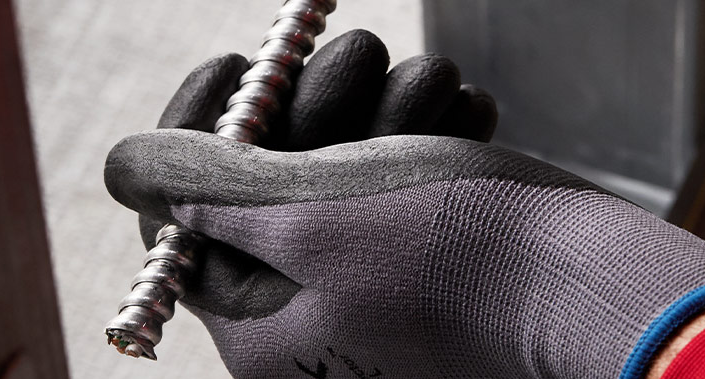
Composite Material Cut-Resistant Gloves
These gloves combine multiple high-performance, high-strength materials to deliver enhanced mechanical protection, including excellent cut resistance, puncture resistance, and abrasion resistance. They are suitable for a wide range of work environments.
Industries That Commonly Use Cut-Resistant Gloves
With technological advancements, cut-resistant gloves have become an increasingly popular and essential choice across various industries.
Food Processing
In this industry, cut-resistant gloves are essential to protect hands from knives and other sharp tools used during food preparation.

Manufacturing and Machining
Whether in mechanical work, automotive manufacturing, or precision processing, cut-resistant gloves are crucial for preventing hand injuries during equipment use.
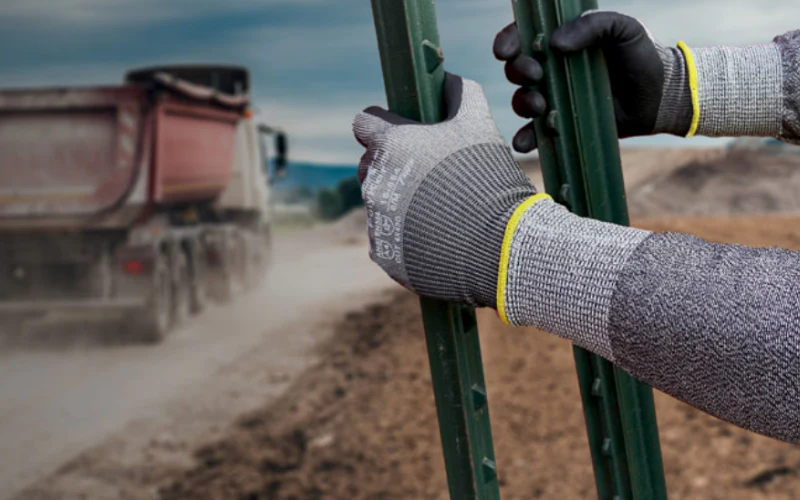
Construction and Renovation
When handling hazardous materials such as rebar and glass, especially on construction sites, cut-resistant gloves provide essential protection against sharp or dangerous objects like debris and exposed wiring.
Fishing Industry
Gloves are used to protect against fish bones, sharp fins, and fishing gear while handling seafood.
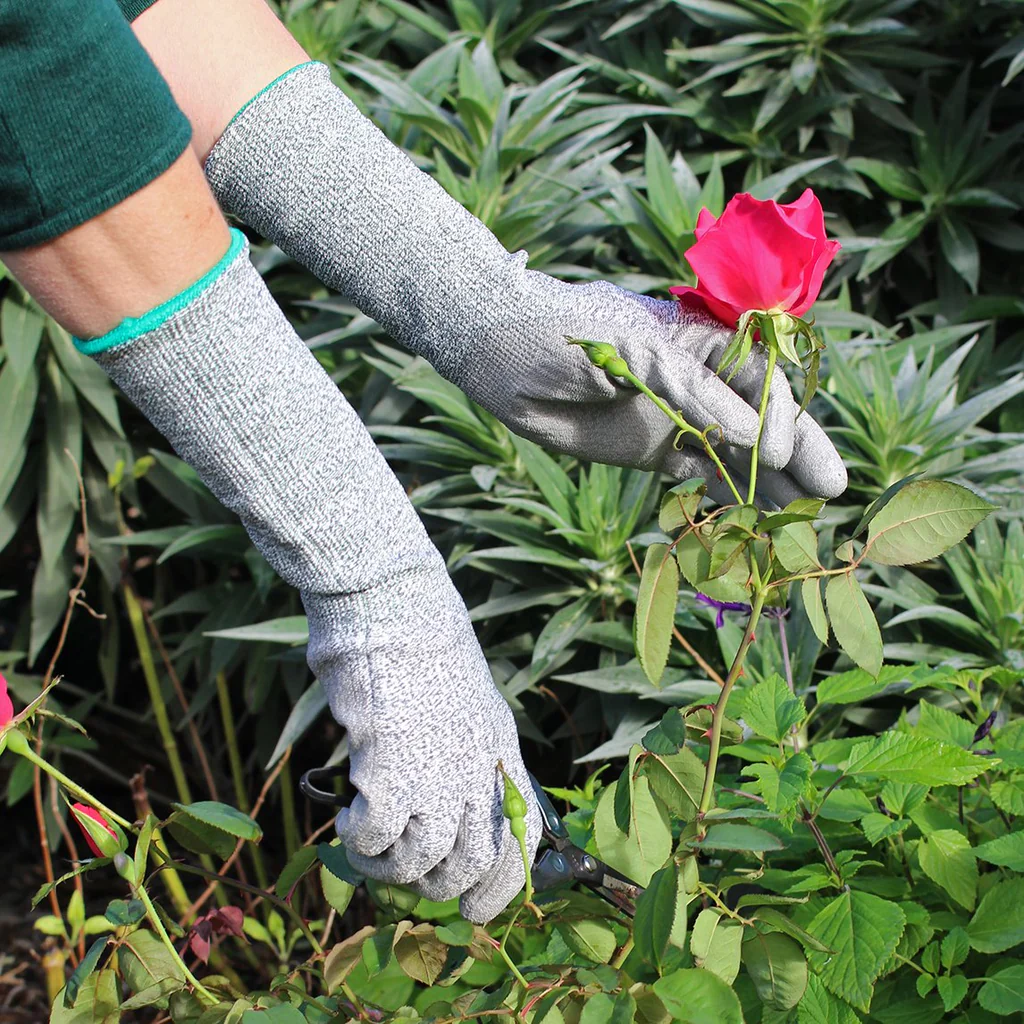
Gardening
In gardening tasks such as pruning and grass cutting, sharp tools are used frequently. Cut-resistant gloves help prevent injuries and infections, with some even offering antibacterial properties to keep your hands safe and healthy.
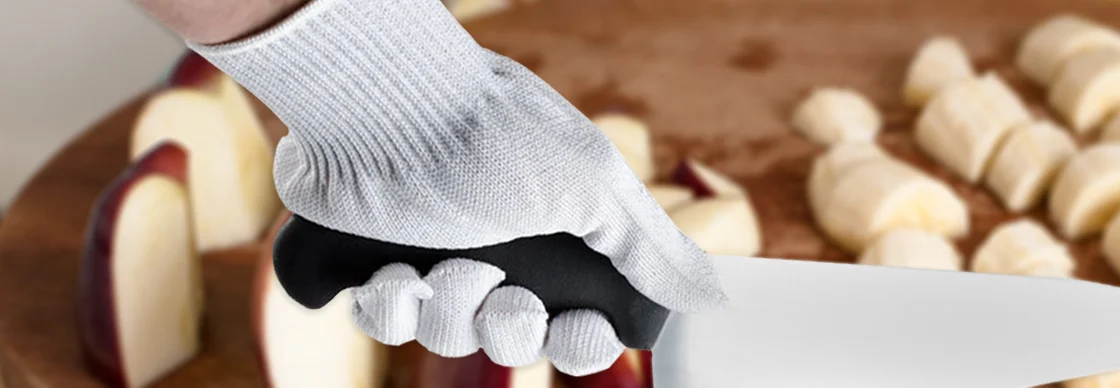
Key Factors to Consider When Choosing Cut-Resistant Gloves
Before purchasing cut-resistant gloves, it is important to assess any potential risks in your working environment. Your choice of glove should be based on the specific hazards and required protective features.
There are countless options available on the market. Selecting a reliable supplier is critical—they can help resolve most concerns. Ask them for certifications to gain deeper insight into the product. At Aibon Safety, we can provide you with any high-performance, durable cut-resistant glove you need.
Additionally, consider whether you need gloves that can be worn over other PPE, or if you prefer gloves that offer sufficient standalone protection.

Conclusion
Before purchasing cut-resistant gloves, it is essential to understand the different types, use cases, and how to select a glove that offers both performance and value. If you are interested in purchasing cut-resistant gloves, please contact us as soon as possible by calling +86 15962398686 to speak with a member of our experienced team, or email us at info@aibonsafety.com. The Aibon Safety team looks forward to assisting you.
How to Measure Glove Sizes – Source: AIBON
Latex gloves– Source: AIBON
Safety gloves– Source: AIBON
Working gloves– Source: AIBON




